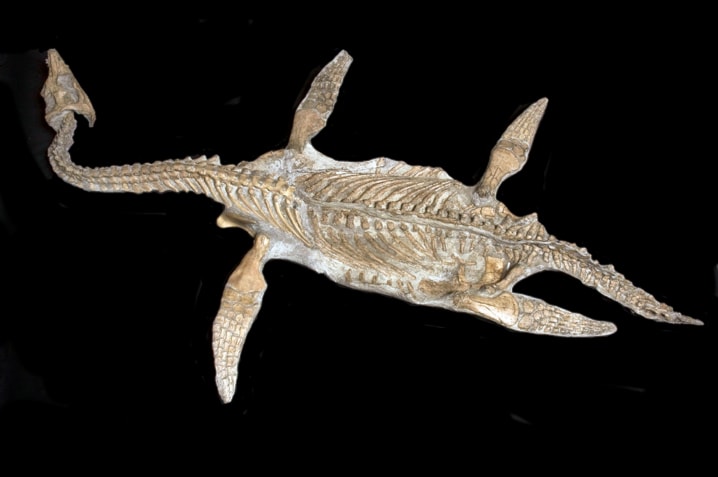CALGARY — It’s not just black gold that’s being mined from northern Alberta’s oilsands — the area is also yielding a virtual treasure trove of ancient fossils.
The area, which contains one of the largest proven crude oil reserves in the world, was once covered by an ancient sea.
Last week, Maggy Horvath, a heavy equipment operator at Syncrude, unearthed a nearly complete plesiosaur fossil during her shift.
It’s the 10th fossil discovered on leases held by the oil giant. Scientist say it’s one of the bigger ones — up to 20 metres long and “mostly neck.”
“I think it’s great that I’m part of this. It felt pretty good to call my son and let him know that I found a prehistoric fossil while working in the mine,” said Horvath.
“As operators we always keep our eyes out for a find.”
The plesiosaur hunted fish with its long neck and a big mouth full of sharp, pointy teeth 100 million years ago. It closely resembles the popular public image of the Loch Ness monster.
Scientists and technicians from the Royal Tyrrell Museum of Paleontology are examining the fossil. They hope to have the specimen removed by the end of the week.
“This is a very rare find. It’s a ... marine reptile with a very long neck, small head and short body. The last one recovered was 10 years ago,” said Don Brinkman, director of preservation and research at the Tyrrell dinosaur museum.
“We are hoping that this is another specimen of this kind of plesiosaur. The new specimen is particularly important because it looks to be nearly complete.”
Alberta’s oilsands are in an area that was once part of a prehistoric sea and have yielded several important marine reptile fossils. The last one found in 2000 was declared to be one of the most complete Cretaceous Ichthyosaurs of its age ever discovered in North America.
It’s the second major find this year. In March, a worker at Suncor stumbled across one of the oldest dinosaur fossils ever unearthed in Alberta at a mine north of Fort McMurray.
